Key Takeaways
1. Separate the people from the problem: Focus on interests, not positions
The basic problem in a negotiation lies not in conflicting positions, but in the conflict between each side's needs, desires, concerns, and fears.
Avoid positional bargaining. Focusing on positions often leads to unwise agreements and damages relationships. Instead, concentrate on the underlying interests driving those positions. This approach allows for more creative problem-solving and mutually beneficial outcomes.
Separate relationship issues from substantive ones. Address people problems directly, without using substantive concessions to appease them. Build a working relationship independent of agreement or disagreement on issues. This separation allows you to be soft on the people while being hard on the problem.
- Key elements of separating people from the problem:
- Recognize and understand emotions (yours and theirs)
- Listen actively and acknowledge what is being said
- Speak about yourself, not about them
- Speak for a purpose, not just to vent
2. Understand the other side's perspective and interests
If you want the other side to appreciate your interests, begin by demonstrating that you appreciate theirs.
Empathy is crucial. Put yourself in their shoes to understand their point of view, even if you disagree with it. This doesn't mean agreeing, but rather comprehending their perspective. Showing that you understand their interests makes them more likely to listen to yours.
Uncover hidden interests. Look beyond stated positions to identify underlying interests. Ask "Why?" and "Why not?" to reveal motivations and concerns. Remember that each side usually has multiple interests, not just one.
- Common interests to consider:
- Basic human needs (security, economic well-being, sense of belonging, recognition, control over one's life)
- Shared interests in preserving relationships, reducing costs, or avoiding conflict
- Complementary interests that can be dovetailed for mutual gain
3. Generate multiple options for mutual gain before deciding
Invent first, decide later.
Avoid premature judgment. Separating the creative process of generating options from the critical process of selecting among them allows for more innovative solutions. Brainstorm without criticism to expand the pie before dividing it.
Look for shared gains. Identify interests that are shared or compatible, then invent options that satisfy those interests. Use differences in interests, beliefs, or resources to create value for both sides.
- Techniques for generating options:
- Brainstorming sessions with clear ground rules
- Consider the problem from different expert perspectives
- Look for opportunities to bundle less important issues for one side with more important issues for the other
- Develop variations of potential agreements (e.g., more stringent/lenient, broader/narrower scope, longer/shorter duration)
4. Use objective criteria to evaluate and choose solutions
Insist on using objective criteria.
Base decisions on principles, not pressure. Agree on fair standards or procedures to judge potential solutions. This approach makes it easier to reach agreement and protects relationships by avoiding a contest of wills.
Be open to reason. While advocating for standards favorable to you, remain open to the other side's suggestions of different criteria. Determine which standards are most relevant and appropriate for your specific situation.
- Examples of objective criteria:
- Market value
- Precedent
- Scientific judgment
- Professional standards
- Efficiency
- Costs
- What a court would decide
- Moral standards
- Equal treatment
- Tradition
- Reciprocity
5. Develop your BATNA (Best Alternative To a Negotiated Agreement)
The reason you negotiate is to produce something better than the results you can obtain without negotiating.
Know your walkaway point. Your BATNA is the standard against which any proposed agreement should be measured. It determines your negotiating power and protects you from accepting unfavorable terms or rejecting favorable ones.
Improve your BATNA. The better your BATNA, the greater your power in the negotiation. Actively work to improve your alternatives to strengthen your position.
- Steps to develop your BATNA:
- Invent a list of actions you might take if no agreement is reached
- Improve some of the more promising ideas and convert them into practical alternatives
- Select, tentatively, the one alternative that seems best
6. Handle difficult tactics with negotiation jujitsu
Don't push back. When they assert their positions, don't reject them. When they attack your ideas, don't defend them. When they attack you, don't counterattack. Break the vicious cycle by refusing to react.
Recognize and neutralize tricky tactics. Be aware of common ploys like deliberate deception, psychological warfare, and positional pressure tactics. Instead of responding in kind, redirect the other side's attention to the merits of the problem.
Use questions and silence. Ask questions to uncover interests, invite criticism of your ideas, and explore the reasoning behind their positions. Silence can be a powerful tool to encourage the other side to reconsider or elaborate.
- Key elements of negotiation jujitsu:
- Deflect attacks on you to the problem at hand
- Reinterpret their attacks as attacks on the problem
- Ask questions and pause
- Use silence strategically
7. Overcome differences in personality, culture, and power dynamics
The ability to see the situation as the other side sees it, as difficult as it may be, is one of the most important skills a negotiator can possess.
Adapt to individual and cultural differences. Be sensitive to variations in communication styles, values, and decision-making processes. Avoid stereotyping while respecting genuine cultural differences.
Deal with power imbalances. When facing a more powerful opponent, focus on interests and objective criteria. Develop and improve your BATNA to increase your negotiating power.
- Considerations for cross-cultural negotiations:
- Pacing and formality of discussions
- Importance of relationships vs. transactions
- Direct vs. indirect communication styles
- Short-term vs. long-term orientation
- Individual vs. collective decision-making
8. Move from inventing options to making commitments gradually
Be persistent in pursuing your interests but not rigid in pursuing any particular solution.
Think about closure from the beginning. Envision what a successful agreement might look like and work backwards to identify necessary steps and potential obstacles.
Use a framework agreement. Create an outline or template for the final agreement to ensure all important issues are addressed and to provide structure for discussions.
- Steps for moving towards commitment:
- Draft possible terms as you go, keeping commitments tentative
- Narrow the range of options for each issue before moving on
- Revisit issues as needed, moving between specific points and the overall package
- Explain underlying interests when proposals are challenged
- Be willing to modify your thinking if persuaded by new information or logic
9. Be hard on the problem, soft on the people
Separate the people from the problem.
Address relationship issues directly. Deal with people problems head-on, rather than trying to solve them with substantive concessions. Build rapport and trust independently of the negotiation's outcome.
Focus on interests, not positions. By concentrating on the underlying needs and concerns of both parties, you can often find solutions that satisfy everyone without requiring either side to back down from their stated position.
- Techniques for being hard on the problem, soft on the people:
- Use "I" statements to express your concerns without attacking
- Acknowledge emotions and perceptions without necessarily agreeing
- Reframe personal attacks as joint problems to be solved
- Look for opportunities to support the other side's positive intentions or efforts
10. Negotiate the negotiation process itself when necessary
Frame each issue as a joint search for objective criteria.
Be explicit about the negotiation process. If the other side is using tactics you find unproductive or unfair, bring it up directly. Negotiate about how you will negotiate.
Propose alternative approaches. If positional bargaining isn't working, suggest principled negotiation or other methods that focus on interests and objective criteria.
- Steps for negotiating the process:
- Recognize the tactic or behavior that's causing problems
- Raise the issue explicitly with the other side
- Question the tactic's legitimacy and effectiveness
- Negotiate over it using the same principles of focusing on interests and objective criteria
Last updated:
FAQ
What's "Getting to Yes" about?
- Principled Negotiation: "Getting to Yes" by Roger Fisher, William Ury, and Bruce Patton introduces the concept of principled negotiation, which focuses on interests rather than positions.
- Conflict Resolution: The book provides a framework for resolving disputes amicably and efficiently, aiming for mutually beneficial outcomes.
- Universal Application: It applies to various negotiation scenarios, from personal to international conflicts, emphasizing a method that is both hard on the merits and soft on the people involved.
Why should I read "Getting to Yes"?
- Improved Negotiation Skills: The book offers practical strategies to enhance your negotiation abilities, making you more effective in both personal and professional settings.
- Conflict Management: It provides tools to manage and resolve conflicts without damaging relationships, which is crucial in maintaining long-term partnerships.
- Broad Applicability: The principles can be applied across different contexts, making it a valuable resource for anyone who negotiates regularly.
What are the key takeaways of "Getting to Yes"?
- Focus on Interests: Instead of bargaining over positions, identify and address the underlying interests of both parties.
- Invent Options for Mutual Gain: Encourage creative solutions that satisfy the interests of all parties involved.
- Use Objective Criteria: Base agreements on fair standards rather than the will of either party, ensuring a more equitable outcome.
What is the principled negotiation method in "Getting to Yes"?
- Separate People from Problems: Address the human aspects of negotiation separately from the substantive issues to prevent personal conflicts from derailing discussions.
- Focus on Interests, Not Positions: Understand the underlying needs and desires that drive each party's stance to find common ground.
- Insist on Objective Criteria: Use fair, independent standards to guide the negotiation process and reach a just agreement.
How does "Getting to Yes" suggest handling more powerful opponents?
- Develop Your BATNA: Strengthen your Best Alternative to a Negotiated Agreement to protect yourself from unfavorable deals.
- Leverage Objective Criteria: Use fair standards to level the playing field, even when the other party holds more power.
- Focus on Interests: By concentrating on mutual interests, you can find solutions that benefit both parties, regardless of power dynamics.
What if the other side won't play by the rules in "Getting to Yes"?
- Negotiation Jujitsu: Redirect their attacks on you or your ideas back to the problem, avoiding direct confrontation.
- One-Text Procedure: Involve a third party to help both sides focus on interests and options rather than positions.
- Stay Principled: Maintain your focus on interests, options, and criteria, encouraging the other side to engage in principled negotiation.
How does "Getting to Yes" address dirty tricks in negotiation?
- Recognize and Address Tactics: Identify deceptive or manipulative tactics and bring them to the other party's attention.
- Negotiate the Process: Discuss and agree on fair negotiation procedures to prevent the use of dirty tricks.
- Focus on Principles: Insist on negotiating based on objective criteria and mutual interests, rather than succumbing to pressure tactics.
What are some of the best quotes from "Getting to Yes" and what do they mean?
- "Separate the people from the problem": This emphasizes the importance of addressing interpersonal issues separately from the substantive negotiation topics.
- "Focus on interests, not positions": Encourages negotiators to look beyond stated demands to understand the underlying needs and motivations.
- "Invent options for mutual gain": Highlights the value of creative problem-solving to find solutions that benefit all parties involved.
How does "Getting to Yes" suggest dealing with people problems in negotiation?
- Build a Working Relationship: Establish a foundation of trust and understanding to facilitate smoother negotiations.
- Negotiate the Relationship: Address interpersonal issues directly and separately from substantive matters to prevent them from affecting the negotiation.
- Separate Treatment from Behavior: Treat the other party with respect, regardless of their behavior, to maintain a constructive dialogue.
What role does BATNA play in "Getting to Yes"?
- Protection Against Bad Deals: A strong BATNA ensures you don't accept an agreement worse than your best alternative.
- Leverage in Negotiation: Knowing your BATNA gives you confidence and power, as you have a clear alternative if negotiations fail.
- Improvement Strategy: Continuously work to improve your BATNA to enhance your negotiating position.
How does "Getting to Yes" recommend inventing options for mutual gain?
- Separate Inventing from Deciding: Brainstorm options without judgment to encourage creativity and innovation.
- Broaden Options: Consider a wide range of possibilities to increase the chances of finding mutually beneficial solutions.
- Dovetail Interests: Look for ways to align differing interests to create win-win outcomes.
How can "Getting to Yes" help in cross-cultural negotiations?
- Understand Differences: Be aware of cultural norms and values that may influence negotiation styles and preferences.
- Adapt Strategies: Tailor your approach to accommodate cultural differences while maintaining the principles of negotiation.
- Focus on Common Interests: Emphasize shared goals and interests to bridge cultural gaps and foster collaboration.
Review Summary
Getting to Yes is widely praised as an essential guide to negotiation, offering practical strategies for principled negotiation. Readers appreciate its concise, actionable advice on focusing on interests rather than positions, separating people from problems, and seeking mutually beneficial solutions. Many found it eye-opening and immediately applicable to various life situations. While some felt it was dry or basic, most reviewers highly recommend it for anyone seeking to improve their negotiation skills in business and personal contexts.
Similar Books

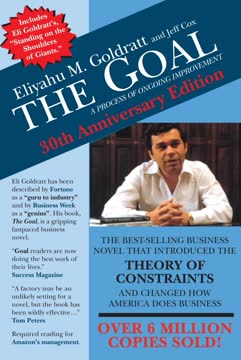
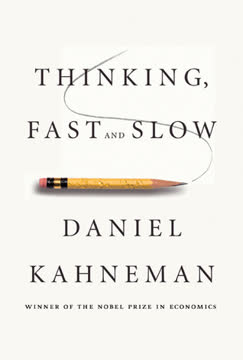
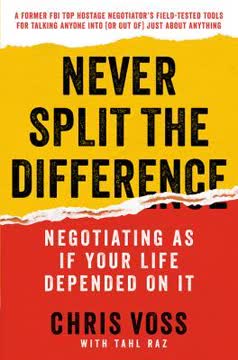


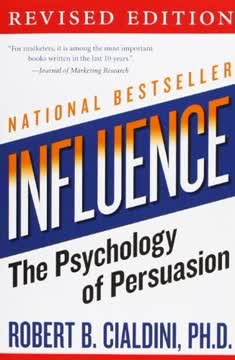


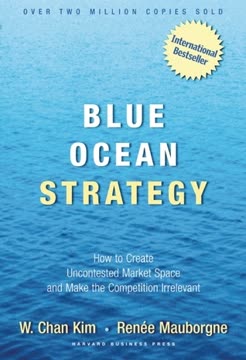
Download PDF
Download EPUB
.epub digital book format is ideal for reading ebooks on phones, tablets, and e-readers.





